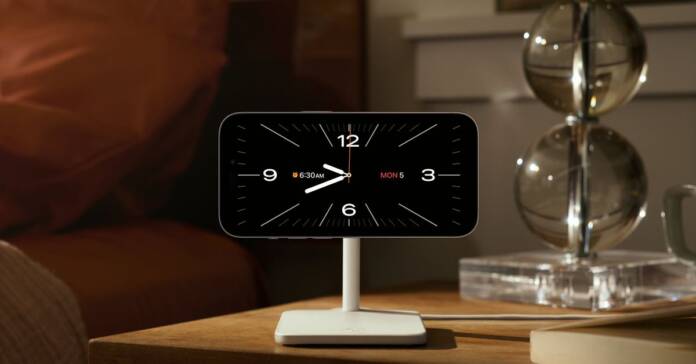For a lot of developers, watching WWDC is a trepidatious affair where they wait to find out whether they’ve been “Sherlocked” — that is, their apps have been outmoded by Apple building their features into its operating systems. We saw it this year when Apple announced Journal, which many have compared to the third-party app Day One. Last year, it was Continuity Cam, which is a lot like smartphone-as-a-webcam-app Camo, and before that, there was Screen Time, which gobbled up traits from Moment.
We’re used to seeing Apple’s new features come from some currently popular app. But it’s less common for Apple to reach back and find inspiration in old, once-ubiquitous tech that predates the iPhone and even the company itself — and this year, that’s exactly what it did, starting with answering machines.
Before visual voicemail, caller ID, and text messaging, the world had chunky machines with cassette tapes in them. You would record a message to the tape, and when someone called, they’d hear your greeting, then leave an audio message after the beep. Where it differed from voicemail in the smartphone age was interactivity: you could hear the message, piped live, through the speaker, and you could still answer the phone if you wanted.
In iOS 17’s coming Live Voicemail feature, the company is doing an interpretation of that. When someone calls and you don’t answer, you’ll see a live transcript on your screen as a voicemail is being recorded, and you can choose to answer it before the caller hangs up.
It goes to show answering machines were just a good idea. Only with Apple’s take on them, you don’t have to listen to someone yell, “I know you’re home, pick up, pick up, pick up,” until you give in or the tape runs out.
We also saw Apple take another stab at a bedside staple: alarm clocks. They still exist, in part because they’re such simple devices but also because you can do fun, sometimes terrible things with them (remember Clocky?). Apple’s answer to them is iOS 17’s StandBy feature. When a locked iPhone with iOS 17 is placed upright in landscape mode, say on a MagSafe stand, it’ll show a new, customizable interface with widgets, the time, or even a screen-spanning clock face.
One of those faces looks very much like some of the analog alarm clocks of old, especially at night when the clock face’s digits or analog clock indices and hands switch to a dim red. Apple even showed a small complication on one clock face that lets you know your next alarm is active (old digital alarm clocks usually did this with a little red light labeled “alarm”).
It’s a nice acknowledgment that information context is important, and sometimes you just need a clock and a little reassurance that your alarm will go off. Unfortunately, you’ll need at least an iPhone 14 Pro for StandBy to be always on.
Lastly, Apple seems to be coming for the humble business card. One of the features the company touted for iOS 17 is called NameDrop, and it works by bringing your iPhone close to another iPhone, which prompts you to share your contact information — your phone numbers and email addresses — with them. It’s essentially streamlining something you can already do by sharing your contact card via AirDrop.
Of course, Apple still took what I’ll generously call cues from others throughout iOS 17. You could argue that NameDrop is a Sherlock of the old Bump app, though that one is long gone after Google acquired it. Apple also turned that feature that lets you lift objects out of Apple Photos into a sticker-making tool this year — an idea that enjoyed a short life realized as an app called Sticker Drop, and its new mood-logging feature has analogs throughout the app store. TechCrunch has a great write-up with these and other examples.
But over the great arc of history, it’s not at all weird to see companies like Apple trying to pull from the past. The old adage about reinventing the wheel exists for a reason — great ideas are destined to be repeated if there’s new context to put them in. Google Pixel phones have already done something akin to the answering machine trick for years, for instance, and even the computer keyboard was just a sensible evolution of the typewriter. Who knows? Maybe cordless phones are next.












